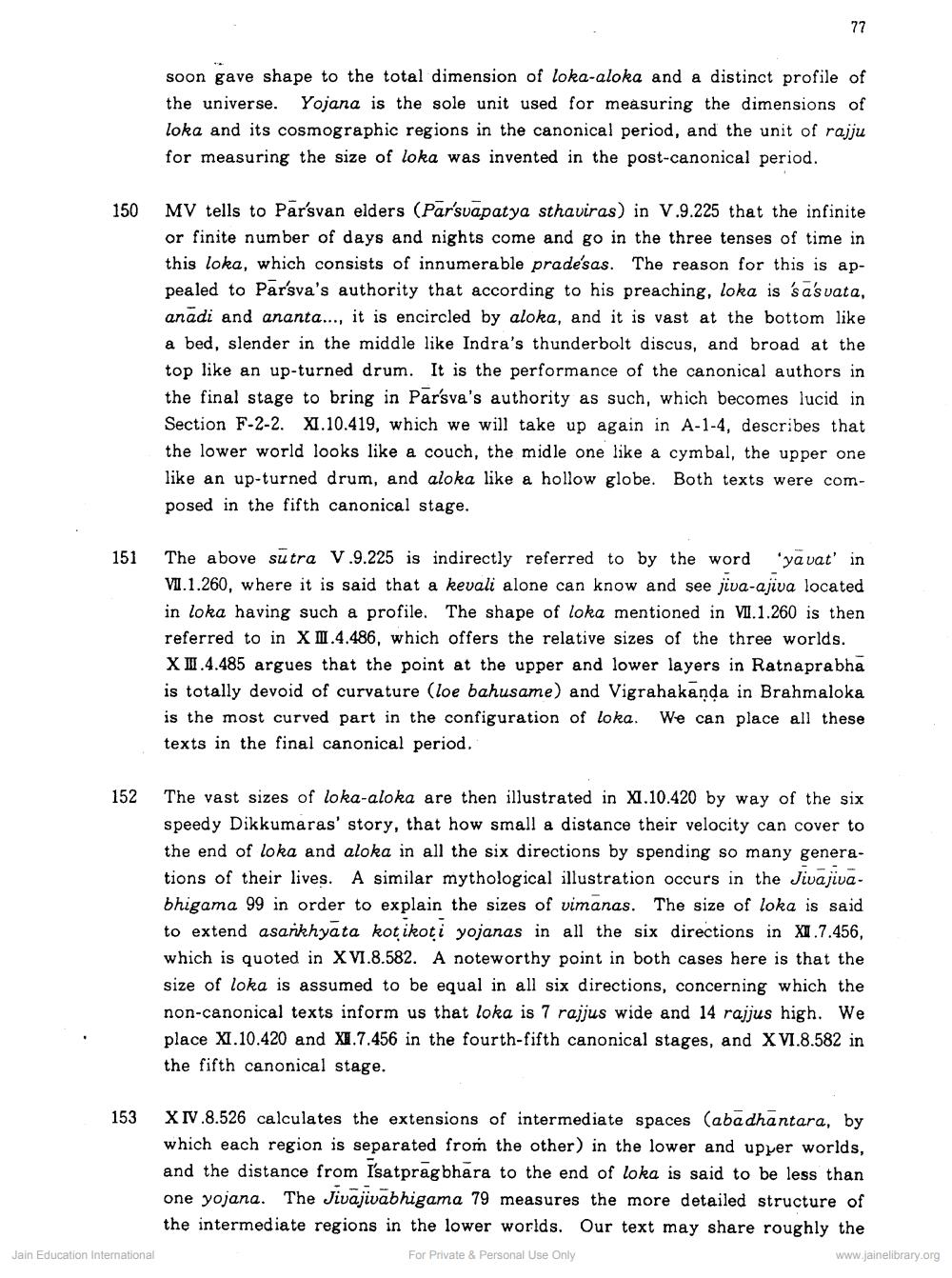________________
150
151
152
153
Jain Education International
77
soon gave shape to the total dimension of loka-aloka and a distinct profile of the universe. Yojana is the sole unit used for measuring the dimensions of loka and its cosmographic regions in the canonical period, and the unit of rajju for measuring the size of loka was invented in the post-canonical period.
MV tells to Par'svan elders (Par'svapatya sthaviras) in V.9.225 that the infinite or finite number of days and nights come and go in the three tenses of time in this loka, which consists of innumerable pradesas. The reason for this is appealed to Parsva's authority that according to his preaching, loka is sasvata, anadi and ananta..., it is encircled by aloka, and it is vast at the bottom like a bed, slender in the middle like Indra's thunderbolt discus, and broad at the top like an up-turned drum. It is the performance of the canonical authors in the final stage to bring in Parsva's authority as such, which becomes lucid in Section F-2-2. XI.10.419, which we will take up again in A-1-4, describes that the lower world looks like a couch, the midle one like a cymbal, the upper one like an up-turned drum, and aloka like a hollow globe. Both texts were composed in the fifth canonical stage.
The above sūtra V.9.225 is indirectly referred to by the word 'ya vat' in VII.1.260, where it is said that a kevali alone can know and see jiva-ajiva located in loka having such a profile. The shape of loka mentioned in VII.1.260 is then referred to in XII.4.486, which offers the relative sizes of the three worlds. XII.4.485 argues that the point at the upper and lower layers in Ratnaprabha is totally devoid of curvature (loe bahusame) and Vigrahakaṇḍa in Brahmaloka is the most curved part in the configuration of loka. We can place all these texts in the final canonical period.
The vast sizes of loka-aloka are then illustrated in XI.10.420 by way of the six speedy Dikkumaras' story, that how small a distance their velocity can cover to the end of loka and aloka in all the six directions by spending so many generations of their lives. A similar mythological illustration occurs in the Jivajivabhigama 99 in order to explain the sizes of vimanas. The size of loka is said to extend asankhyata kotikoti yojanas in all the six directions in XI.7.456, which is quoted in XVI.8.582. A noteworthy point in both cases here is that the size of loka is assumed to be equal in all six directions, concerning which the non-canonical texts inform us that loka is 7 rajjus wide and 14 rajjus high. We place XI.10.420 and XI.7.456 in the fourth-fifth canonical stages, and XVI.8.582 in the fifth canonical stage.
XIV.8.526 calculates the extensions of intermediate spaces (abadhantara, by which each region is separated from the other) in the lower and upper worlds, and the distance from Isatprag bhara to the end of loka is said to be less than one yojana. The Jivajivabhigama 79 measures the more detailed structure of the intermediate regions in the lower worlds. Our text may share roughly the
For Private & Personal Use Only
www.jainelibrary.org




